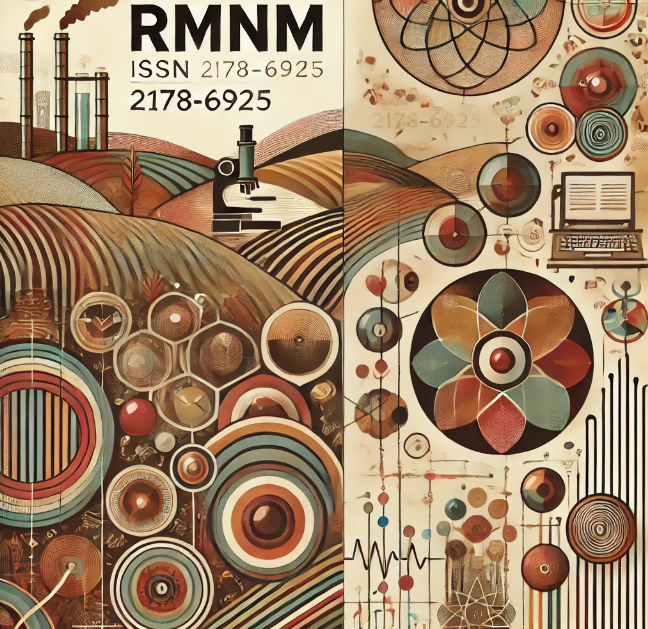ANÁLISE DA RELAÇÃO ENTRE ENXAQUECA E ANSIEDADE EM SERVIÇO DE ATENDIMENTO PÚBLICO DO MUNICÍPIO DE CASCAVEL-PR
DOI:
https://doi.org/10.61164/rmnm.v5i1.2390Keywords:
Enxaqueca; Cefaleia; Ansiedade; FisiopatologiaAbstract
Goal: The migraine is a dysturb wich involves huge amount of the population and is one of the principal complaines in primary health attention associate with anxiety. Undertending the pathophisiology of headache and neurotransmitters involved in general anxiety disease, we may observe a reationship between both pathologies. As such, we aim to identify cases os migraine in specialized attention services of and the previous management proposed on the primary health attention. Methodology: it was realized an cross-sectional and retrospective study with the medical record analysis from Consórcio Intermunicipal de saúde do Oeste do Paraná (CISOP). Results: 300 medical records were anylised, among these, 54 presented complaints of any kind of headache. It is observed that the sample group were mostly composed of women (n= 46; 85,1%), about 46 (85,1%) patients did not presente complaints of anxiety at the time of consultation and Only 18 (33,3%) used anxiolytics and/or antidepressants. Conclusion: from the bibliographical review, can be identified an pathophysiological relationship between casos of migraine and anxiety. Although, through this study, we did not identify complaints of anxiety or previous treatment in the neurological consultation. We consider that new studies with a larger sample are necessary and statistical analysis to determine the causal link of the topic.
References
American Psychiatrist Association - APA. Manual diagnóstico e estatístico de transtornos mentais: DSM-5. Porto Alegre: Artmed, 2014.
BOFF, T.C, et al. A função do glutamato nos transtornos de ansiedade e no transtorno obsessivo-compulsivo. Anais do II simpósio de neurociência clínica e experimental: doenças neurodegerativas [Trabalhos apresentados]. Chapecó-SC. Universidade Federal da Fronteira Sul (UFFS). 2021
CASUCCI G.; VILLANI V.; FINOCCHI C. Therapeutic strategies in migraine patients with mood and anxiety disorders: physiopathological basis. 2010 Disponível em: DOI 10.1007/s10072-010-0296-3. Acesso em setembro 2022.
CHARLES, A. The pathophysiology of migraine: implications for clinical management. The Lancet. Londres. v. 17, n. 2, p.174-182, fev. 2018. Disponível em: https://doi.org/10.1016/S1474-4422(17)30435-0. Acesso em: agosto 2023.
EIGENBRODT, A.K. et al. Diagnosis and management of migraine in ten steps. Nature reviews - Neurology. v. 17, n. 8, p. 501-514. 2021. Disponível em: doi:10.1038/s41582-021-00509-5. Acesso em: jun 2023.
FORLENZA, O. V. et al. Clínica psiquiátrica de bolso. 1. ed. São Paulo, 2014.
JESUS, C.A.S.; PERES, M.F.P. Revisão dos principais fatores de risco para cronificação da enxaqueca. Headache Medicine. São Paulo, v. 3, n. 4, p. 181-187, Out/Nov/Dez. 2012. Disponível em: https://headachemedicine.com.br/index.php/hm/article/view/342/722. Acesso em: Nov 2023.
KARAKURUM B., et al. Personality, depression, and anxiety as risk factors for chronic migraine. The International Jounal of Neuroscience, Estados Unidos. v. 114, n. 11, p. 1391-139. 2004. Disponível em: doi 10.1080/00207450490476002. Acesso em: novembro 2023.
KHAN, J. et al, Genetics, pathophysiology, diagnosis, treatment, management, and prevention of migraine. Biomedicine & Pharmacotherapy. v. 139. jul. 2021, Disponível em: https://doi.org/10.1016/j.biopha.2021.111557. Acesso em: agosto 2023
KRYMCHANTOWSKI, A.V.; KRYMCHANTOWSKI, A.G.F.; JEVOUX, C.C. Migraine treatment: the doors for the future are open, but with caution and prudence. Arq. Neuro-Psiquiatria, São Paulo, v. 77. n. 2,p. 115-121, fev. 2019. Disponível em: https://doi.org/10.1590/0004-282X20190004. Acesso em: maio 2023.
LATYSHEVA, N. et al. Cognitive impairment in chronic migraine: a cross-sectional study in a clinic-based sample. Arq. Neuropsiquiatria. São Paulo, v. 78. n 3 p.133-138, Mar. 2020. Disponível em: doi.org/10.1590/0004-282X20190159. Acesso em: maio 2023.
MARTIN, V.T.; FEOKTISTOV, A.; SOLOMON, G.D. A rational approach to migraine diagnosis and management in primary care. Annals of Medicine, Londres, v.53 n.1, p.1979-1990, dez, 2021. Disponível em: doi: 10.1080/07853890.2021.1995626. Acesso em: junho 2023
MINEN, M.T. et al. Migraine and its psychiatric comorbidities. Journal of neurology, neurosurgery, and psychiatry-BMC, Londres, v. 87, n. 7, p. 741–749, Jan, 2016. Disponível em: https://doi.org/10.1136/jnnp-2015-312233. Acesso em: junho 2023.
PERES, M.F.P. et al. Anxiety and depression symptoms and migraine: a symptom-based approach research. The Journal of Headache and Pain -BMC, Londres, v.18, n. 37. Dez, 2017. Disponível em: doi: 10.1186/s10194-017-0742-1.
ROWLAND, L.P. et al. Merrit – Tratado de Neurologia. 13.ed. Rio de Janeiro: Guanabara Koogan, 2018.
SILBERSTEIN, S. Migraine. The Lancet, Reino Unido, v 363, ed. 9406, p. 381-391, Jan 2004. DOI: Disponível em: https://doi.org/10.1016/S0140-6736(04)15440-8. Acesso em: junho 2023.
SPECIALI, J.G. et al. Protocolo Nacional para diagnóstico e manejo das cefaleias nas unidades de urgência do Brasil. Academia brasileira de neurologia – departamento científico de cefaleia da Sociedade Brasileira de Cefaleia. [Publicação online]; 2018. Acesso em outubro 2022.
TOSTES, M.L. Perfil de pacientes atendidos no ambulatório de neurologia do núcleo de gestão assistencial-59 de Ribeirão Preto: explorando os migranosos. Dissertação (mestrado) Universidade de Ribeirão Preto, UNAERP, Saúde e Educação. 2015. Acesso em: outubro 2022.
Downloads
Published
How to Cite
Issue
Section
License
Copyright (c) 2024 Revista Multidisciplinar do Nordeste Mineiro

This work is licensed under a Creative Commons Attribution-NonCommercial-ShareAlike 4.0 International License.




